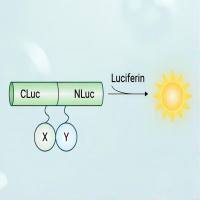Overview: Imaging in the Study of Integrins
互联网
524
Integrins play critical adhesion and signaling roles during development, wound healing, immunity, and cancer. Central to their function is a unique ability to dynamically modulate their adhesiveness and signaling properties through changes in conformation, both homo- and heterotypic protein–protein interactions and cellular distribution. Genetic, biochemical and structural studies have been instrumental in uncovering overall functions, describing ligand and regulatory protein interactions and elucidating the molecular architecture of integrins. However, such approaches alone are inadequate to describe how dynamic integrin behaviors are orchestrated in intact cells. To fill this void, a wide array of distinct light microscopy (largely fluorescence-based) imaging approaches have been developed and employed. Various microscopy technologies, including wide-field, optical sectioning (laser-scanning confocal, spinning-disk confocal, and multiphoton), TIRF and range of novel “Super-Resolution” techniques have been used in combination with diverse imaging modalities (such as IRM, FRET, FRAP, CALI, and fluorescence speckle imaging) to address distinct aspects of integrin function and regulation. This chapter provides an overview of these imaging approaches and how they have advanced our understanding of integrins.








